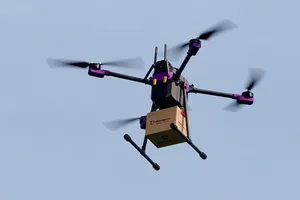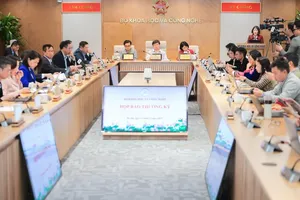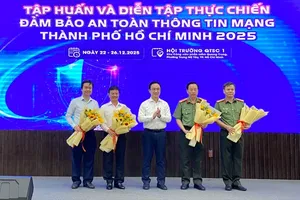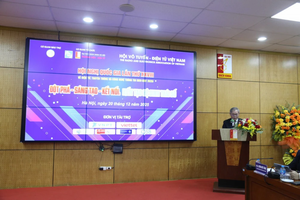 |
A customer is buying a SIM card with 2G technology in a phone shop in District 7 of HCMC (Photo: SGGP) |
Accordingly, having surveyed and analyzed the market trends, mobile technologies, and state management goals, the Ministry of Information and Communications (MIC) has just introduced a formal dispatch for the roadmap to switch off the 2G mobile signal for good no later than September 2024, when the business permit for the 2G mobile telecoms service and the radio frequency band license come to an end.
At that time, MIC is going to replan the bands of 1800MHz and 1900MHz not to serve 2G-technology devices, which were stipulated not to be imported from 2020. Deputy Minister of Information and Communications Pham Duc Long informed that the Departments of Information and Communications in all provinces and cities have been instructed to check and handle informal imports of such devices so that in September 2024, there will no longer be any of them circulating in the market.
MIC has asked that mobile service providers depend on this roadmap to help their subscribers switch to smartphones with the 4G or 5G technology so that at the end of this year, the proportion of 2G technology users is below 5 percent. The plan to permanently stop the 2G signal must ensure user rights and comply with related legal regulations, guaranteeing a stable mobile service provision.
Because the lifespan of most terminal is 3 years and the time of forbidding the imports of 2G-technology devices started in 2020, most 2G devices are not at the end of their use cycle, and consumers are expected to replace them soon.
Statistics from the Telecoms Authority under MIC reveal that 25 localities nationwide have a high proportion of smartphone use of 80 percent. Based on the reality in Vietnam and the experience obtained from other countries, the Telecoms Authority proposed practical solutions to increase this proportion, which will in turn promote the development of a digital economy.
Along with urging telecoms enterprises to adopt measures for their customers to upgrade from outdated technologies (2G and 3G) and to switch to price-subsidized smartphones (of up to 50 percent), MIC is going to check the circulation of mobile phones with 2G or 3G technology while preventing 2G and 3G mobile phones not meeting Technical Regulation No.117:2020/BTTTT from joining current mobile telecoms networks.
Most mobile carriers are now developing their own plans to support their subscribers via competitive devices and beneficial mobile data packages so that mobile users do not experience communications disadvantages or interruption.
For instance, Viettel and MobiFone are running their own price subsidy schemes for mobile devices and various promotional data packages. VNPT VinaPhone has gradually turned off 2,000 2G stations with a low number of subscribers and supported 1.9 million subscribers to change to 3G or 4G technology.
Meanwhile, MIC is adopting a special policy for people in remote areas and those using telecoms services to run public services. Accordingly, each household is given a tablet or part of the charge for a new smartphone with 4G technology.
It is worth noticing that changing the habit of a large number of people is not an easy task and requires careful consideration. Many customers after receiving support to switch to a 4G-technology device still come back to their old 2G one because they are used to the latter and have no need for the former.
The 2G telecoms network was first introduced in Vietnam in 1993. So far, its security vulnerabilities have been exploited by hackers for fraudulent activities. Moreover, its existence means a barrier to the implementation of more advanced technologies like the 4G and 5G ones as the simultaneous operation of all 2G, 3G, 4G, and 5G technologies costs a huge amount of money.
Therefore, turning off this outdated technology is a necessity, and that was piloted in the cities and provinces of HCMC, Da Nang, Lang Son, Thai Nguyen, Binh Duong, Quang Binh, Nghe An, Dong Thap, Ninh Binh, Thua Thien-Hue.
However, experts in the field commented that switching off its brother 3G is much simpler thanks to a great similarity between this and the 4G technology in data exploitation, leading to a smoother transformation. Leading mobile carriers in Vietnam have ‘quietly’ turned off the 3G in areas with good 4G coverage for a long time.
Vietnam opts to switch off the 2G technology nationwide before the 3G one to popularize the more modern 4G and 5G technologies along with smartphones. This is to fulfill the targets in the National Digital Transformation Program until 2025, with an Orientation to 2030, approved by the Prime Minister.
MIC’s reports show that in May 2023, there are over 123 million mobile subscribers in the country, 101 million of whom use smartphones. That is a rise of 8.1 million (8.72 percent) compared to this time last year. The number of subscribers still prefer traditional mobile phones is 22.26 million, but then unexpectedly increased to 23.1 million in September 2023. The reason could be a large quantity of mobile phone numbers with certain meanings are now activated by sellers to trade at profitable prices.
























